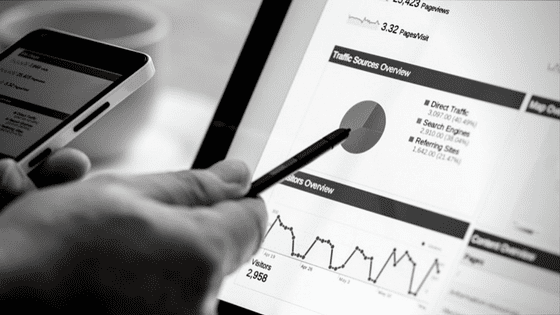Suppose your business experiences a 10% increase in customer purchases in the next three months – you might need to start recruiting or ordering more inventory to meet demand. If you have this information early enough through a sales forecast, you can gain valuable time to make the necessary adjustments.

Sales forecasts can have a considerable impact on your company’s success. They allow you to predict upcoming changes early enough for you to be able to respond and mitigate any risks. A common misconception that they are incredibly complicated and time-consuming keeps small businesses from taking advantage of this versatile and informative tool.
At its core, projecting the future of your business is based on looking into repetitive patterns from the past and the ways they can have an impact in the future. Here are three small tips that can make the task easier to complete.
1) Look to the past.
The first step of sales forecasting starts with looking to the past. Dive into your accounting records and aim to work with precise numbers that go as far back as possible. And keep in mind that forecasting isn’t exclusive only to sales – depending on the goals you have as a business, you can collect other types of metrics and apply the same tactics to them. It’s all an exercise of finding repetitive patterns and understanding the reasons behind them.
Aim to improve your knowledge of the ways your sales numbers changed across the quarters. What you should look for is any spikes and drops that repeat over the years – these can be caused by a seasonal factor which might continue influencing your performance in the future. A few helpful questions you might want to consider at this stage are:
- How were my sales numbers changing – were they growing / decreasing / fluctuating / staying the same?
- Are there any particular periods of time that show higher / lower numbers than the rest?
- Do these changes repeat across the months / years and what might be causing them?
If you’re working with large amounts of data, visualising the numbers can make it easier to find the patterns you’re searching for. You don’t necessarily need to purchase expensive software for the task, since programs that you most likely already have can get the job done – have a look at how we built a sales forecast template through Excel.
2) Consider your future prospects.
Looking at how your sales numbers added up in the past is only half of the equation. You also need to look forward and identify promising leads and prospects. Are there any major orders or deals that you are currently negotiating? Is there an opportunity that you have been working towards, which can considerably boost your business?
Relying solely on chances which aren’t set in stone is not something we would recommend, but you shouldn’t entirely ignore these factors either. Keeping them in mind when you do your sales forecast adds an extra layer of detail, which can help you make a clearer and better informed decision for your next step.
3) Be prepared to make adjustments.
Note that a sales forecast isn’t an exact snapshot into the future. Data will rarely be 100% accurate, and it is possible for your business to not match the trend you have predicted. However, a forecast doesn’t need to be perfect in order to be valuable.
For example, if you notice that you’re falling behind on your quota, this can be a signal to stop and evaluate the situation. While investigating, you might learn that a competitor is taking away consumer interest from you through an aggressive marketing campaign or the launch of a new service. Alternatively, there might be changes in consumer behavior driven by the emergence of new trends in your market. Having a forecast as a reference point prompts you to make these discoveries.
There will also be external factors which can influence your sales, but be entirely out of your control. Some examples include major events, which can be either public (i.e. elections) or industry specific. While you might not be able to isolate yourself from them, you could include them in your business strategy in a way that will allow you to adapt and shift circumstances to your advantage.
At the end of the day, use your sales forecast not as the ultimate prediction tool, but rather as a means to evaluate, compare and motivate. Take notes of any differences when the numbers don’t match with the projected targets. Did you struggle to match them? Did you surpass them? Can you find the reason behind these changes? With both negative and positive outcomes, always ask yourself why it happened. Once you know the ‘why’, you can take measures to avoid it, or make it happen again.



















